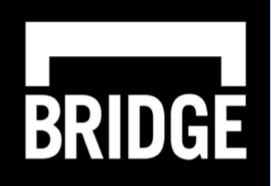In swimming, there is often an easy and a hard way to do something. All swimmers have experienced the effortless races and the not so effortless races. Among the factors that affect your endurance and speed, correct body position in the water can play a huge role in maintaining your technique as your muscles begin to fatigue. Racing is hard, and how you feel often does not correlate with how fast you’ll go. However, giving your body the best opportunity to maintain form during a race will help you finish stronger. Let’s discuss how to improve your body position.
1. Better Balance on Land
The first step to better body position in the water is improving your core strength and overall balance on land. Greater stability in your core gives you increased control over the position of your body when it is horizontal in the water. You can develop this stability in a variety of ways, ranging from core exercises like planks to single-legged exercises that test your balance and control. When you develop good balance, you improve your proprioception, or awareness of your body in space. This becomes critical in the water because it helps you identify the angle of your bodyline and whether you are maintaining a hydrodynamic position from fingertips to toes.
2. Basic Drilling
Body position drills in the pool are valuable for reinforcing proper technique. Although coaches generally focus on them in the beginning of the season to solidify habits early on, swimmers can continue to integrate body position drills throughout the season whenever drilling is a part of one’s practice. If drilling sets are limited, swimmers should include some body position work into their warm ups at practice. To emphasize that “downhill” position (slight pressure on your chest, head neutral, hips elevated) start with basic drills that don’t include arm strokes or even rotation. Once you master the correct position of your head, neck, and core, then you can progress to more complicated drills.
3. Form While Fatigued
To benefit in races from your dryland and drilling, you need to simulate the racing experience and practice maintaining excellent technique throughout. Your swimming doesn’t have to look pretty, per se, but you need to be disciplined about holding your body position in the water when your muscles begin to break down at the end of a race. For example, if it is fly technique you’re looking to improve, try doing 100’s with the first 50 fast free to tire you out and the last 50 butterfly to practice holding a downhill position. Everyone can have great body position on the first lap, but having the strength, control, and technique on the last 50 can be challenging.
Working on your technique does not have to be separate from working on your endurance and speed. Rather, learn to integrate technical work into every practice so you begin to create a habit of maintaining form when you are tired. Try a few of these body position tips to help you finish your races strong!

About BridgeAthletic
 BridgeAthletic works with elite professional, collegiate, and club swimming programs to provide a turnkey solution for dryland training. Led by Nick Folker, the top swimming strength and conditioning coach in the world, our team builds stroke-specific, custom-optimized dryland programs for each of our clients. The individualized workouts are delivered directly to athletes via our state of the art technology platform and mobile applications. Check Nick and BridgeAthletic out as recently featured in SwimSwam.
BridgeAthletic works with elite professional, collegiate, and club swimming programs to provide a turnkey solution for dryland training. Led by Nick Folker, the top swimming strength and conditioning coach in the world, our team builds stroke-specific, custom-optimized dryland programs for each of our clients. The individualized workouts are delivered directly to athletes via our state of the art technology platform and mobile applications. Check Nick and BridgeAthletic out as recently featured in SwimSwam.
 Nick Folker is the Co-Founder and Director of Elite Performance at BridgeAthletic. Nick’s roster of athletes includes 35 Olympians winning 22 Olympic Medals, 7 team NCAA Championships and over 170 individual and relay NCAA championships. Megan Fischer-Colbrie works as the Sports Science Editor at BridgeAthletic. Megan was a four-year varsity swimmer at Stanford, where she recently graduated with a degree in Human Biology. The Championship Series by BridgeAthletic is designed to empower athletes with tips from the pros that will help them reach peak performance come race day. We will be covering competition-focused topics such as nutrition, recovery, stretching, and mental preparation.
Nick Folker is the Co-Founder and Director of Elite Performance at BridgeAthletic. Nick’s roster of athletes includes 35 Olympians winning 22 Olympic Medals, 7 team NCAA Championships and over 170 individual and relay NCAA championships. Megan Fischer-Colbrie works as the Sports Science Editor at BridgeAthletic. Megan was a four-year varsity swimmer at Stanford, where she recently graduated with a degree in Human Biology. The Championship Series by BridgeAthletic is designed to empower athletes with tips from the pros that will help them reach peak performance come race day. We will be covering competition-focused topics such as nutrition, recovery, stretching, and mental preparation.
Follow BridgeAthletic on Twitter here.
Like BridgeAthletic on Facebook here.
Courtesy of BridgeAthletic, a SwimSwam partner.

This is crucial factor in long distance swimming or in triathlon swimming. With improved balance I could maintain my speed in interval sessions without being out of breath.
“Working on your technique does not have to be separate from working on your endurance and speed. Rather, learn to integrate technical work into every practice so you begin to create a habit of maintaining form when you are tired.”
TRUTH!!!!!
+1
Do you have an opinion on the new trainning Altitude mask, that simulate higher altitudes, do they really work?